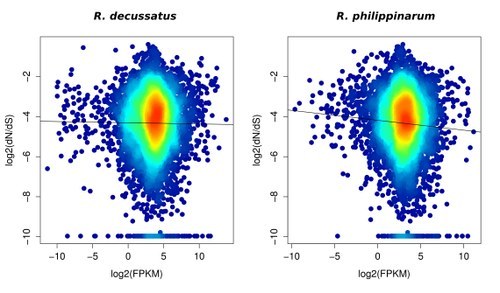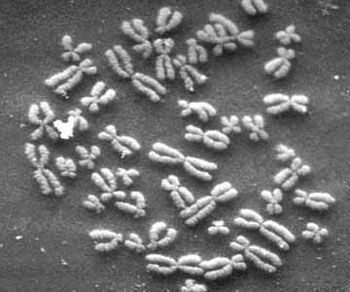
Evolution is a fundamental process determining the biology of living organisms, and by consequence their interactions with the ecosystem and their responses to environmental changes. This line of research focuses on the study of biological evolution at molecular and genomic levels through a comparative approach. The main subject of analysis is the structure - meant as both organization and content - of the genome of marine organisms, with a specific focus on: expansion and contraction of gene families, molecular evolution of coding sequences, structure and variability of tRNAs and rRNAs, characterization of transposable elements and repetitive elements, and the interaction between nuclear and mitochondrial genomes. The study of these features provides the means to understand adaptations, plasticity, resistance/vulnerability to abiotic (e.g. temperature, pH, salinity, pollutant concentrations), biotic (e.g. pathogens, parasites, predators, competitors) or anthropogenically-driven environmental changes. Genomic data, properly integrated with physiological and ecological studies, can thus be fundamental to better understand the biology of organisms and to guide future choices in sustainable exploitation.
The comparative approach is more efficient when a high fraction of biodiversity is investigated. The higher the number of taxa considered, the more accurate the predictions will be. Using high-throughput sequencing techniques provides a large amount of data at limited cost and is thus essential, but "Big Data" generation is not sufficient to guarantee the success of research activities. Great care must be taken in a detailed study to utilize proper analytical tools and to train professionals to acquire the necessary skills.
Currently, this line of research at the Fano Marine Center focuses on the study of bivalve molluscs (which soon will be extended to cephalopods and gastropods) and crustaceans.

Thanks to the continuous advancement in sequencing technologies, and to the reduction of production and analytical costs, in the last decade a high amount of information has been produced on the genomes of many marine organisms, from bacteria to sharks, both raw and annotated. Those data have high scientific value since they provide the molecular basis for the understanding of the phenotype of an organism, allowing us to better understand the evolutionary processes guiding distribution, function and role of such organisms in their environment and also to understand how they can react to anthropic-derived environmental changes.
Sequencing-based approaches can be applied to eukaryotes (unicellular ones such as protozoans and microalgae, or metazoans such as fish and invertebrates) and to prokaryotes (such as heterotrophic bacteria able to degrade organic matter, or autotrophs capable to utilize CO2 for biomass production) or even viruses. The approach can provide insight into organismal responses to stress, disturbance and ecosystem alterations, as well as the evolutionary processes and adaptations that any biological entity develops to interact with their environment.
Comparative analysis of the genome of marine organisms allows the analysis of structure, function and evolution of the complex regulatory systems guiding survival and function of any marine species. The complexity of marine habitats provides an unparalleled species richness that has only recently obtained sufficient attention - also for the many possible implications at biotechnological level offered by the chance to study metabolites produced by marine organisms of biomedical and industrial relevance.